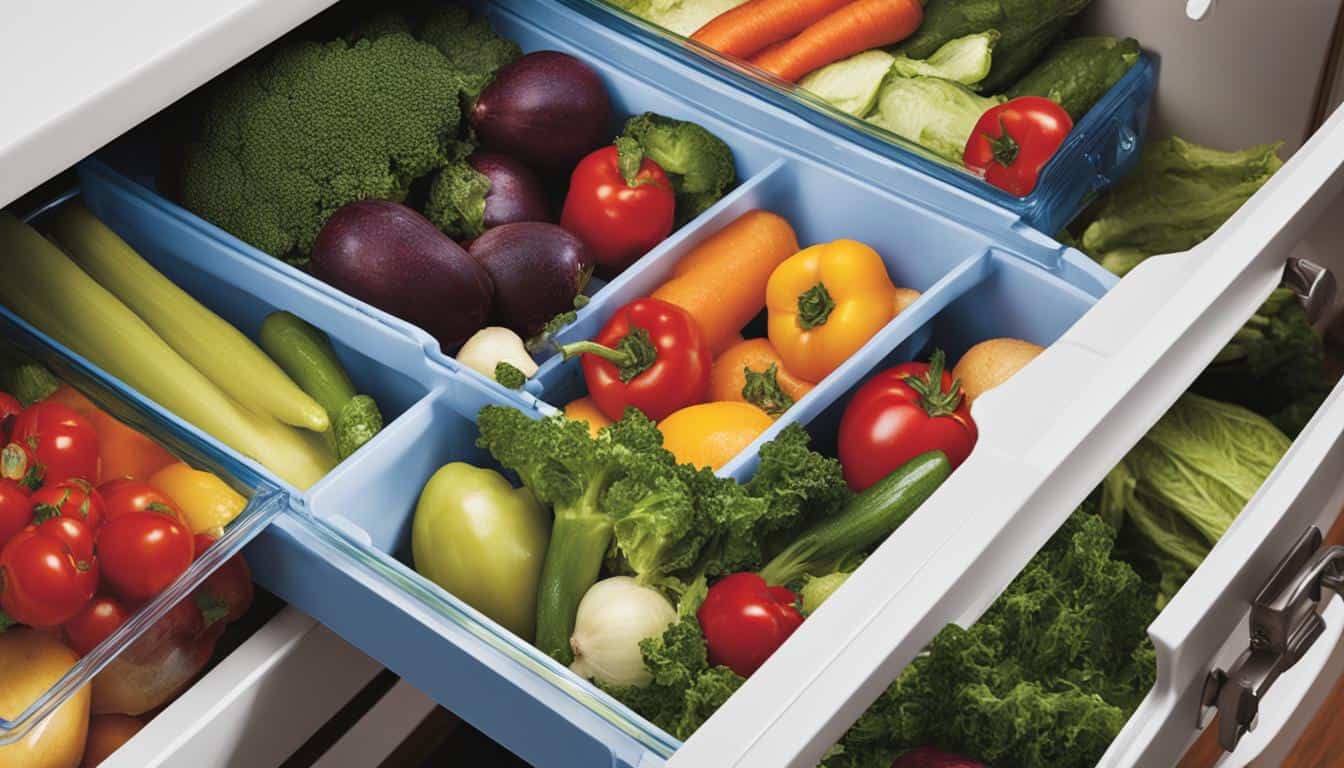If you’re like most people, you probably think that storing your fruits and veggies in the crisper drawers of your fridge is the best way to keep them fresh. While it’s true that crisper drawers can help extend the shelf life of your produce, there are many myths surrounding their use.
In this article, we’ll debunk common fridge crisper drawer myths so that you can properly store your produce for maximum freshness and longevity. From ideal storage conditions to cleaning tips, we’ll cover everything you need to know to get the most out of your crisper drawers. So, let’s get started!
Myth 1: All fruits and vegetables go in the crisper drawer.
It’s a common misconception that all produce should be stored in the crisper drawer, but this is far from the truth. In fact, different fruits and vegetables require different storage conditions to stay fresh and last longer.
For instance, leafy greens like spinach and lettuce t ive in a high-humidity environment, while other vegetables such as carrots and potatoes require drier conditions.
The ideal crisper environment can differ significantly depending on the type of produce you’re storing. It’s important to separate your produce and store them in separate drawers or compartments that offer the optimal humidity and temperature levels. Alternatively, you can use breathable containers to keep produce fresh.
| Produce Type | Ideal Crisper Environment |
|---|---|
| Leafy greens | High humidity (90-100%) |
| Root vegetables | Drier conditions (30-40%) |
Keeping your produce separate in the right conditions will help avoid premature wilting, discoloration, or spoilage. Moreover, for produce that requires higher humidity, it’s best to store it in a separate drawer or compartment rather than in the main section of the fridge.
If you don’t have separate drawers or compartments, you can create a makeshift humidity chamber by placing a damp paper towel in a breathable plastic bag alongside your produce.
By knowing the ideal crisper environment for your produce, you can keep your fruits and vegetables fresh for longer, saving you time and money in the long run.
Myth 2: Washing fruits and veggies before storing prolongs freshness.
It’s a common misconception that washing fruits and vegetables before storing them can help keep them fresh for longer. However, doing so can actually increase the risk of spoilage. Moisture from washing can create the perfect environment for bacteria growth, causing your produce to go bad faster. So, what should you do instead?
It’s best to only wash your fruits and veggies right before you plan to eat them. This helps to minimize moisture and prevent bacteria growth.
To avoid any potential contamination from harmful chemicals or pesticides, make sure to wash them under cool, running water before consumption. Remember, wash before eating, not before storing!
If you’ve purchased pre-washed or ready-to-eat fruits and veggies, there is no need to wash them again before storing. In fact, doing so may introduce unnecessary moisture, which can be detrimental to their shelf life.
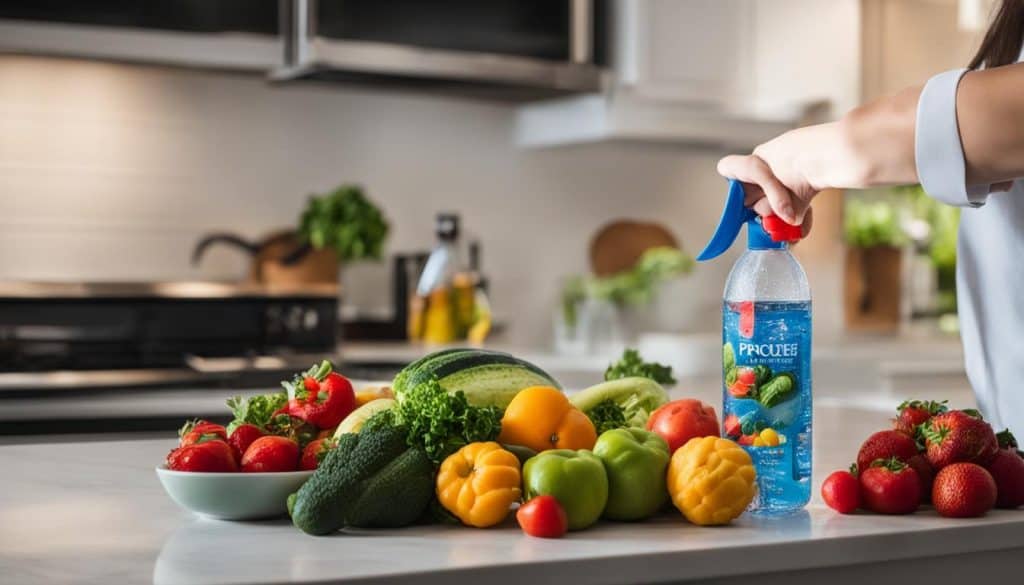
How to Properly Wash Produce
To avoid any potential contaminants on your produce, it’s important to wash them thoroughly when you’re getting ready to eat them. Here are some tips on how to properly wash fruits and veggies:
- Wash your hands thoroughly with soap and warm water before handling any produce.
- Rinse your fruits and veggies under cool, running water. Do not use hot water, as it can damage certain produce.
- Use a vegetable scrub brush to gently scrub produce with firm skin, such as potatoes or carrots.
- For produce with softer skin, such as berries or tomatoes, gently rub them with your fingers.
- Dry your produce with a clean towel or paper towel before storing or consuming.
Myth 3: Crisper drawers are magical anti-wilting devices
It’s a common misconception that crisper drawers are magic anti-wilting devices that can keep your produce fresh forever.
While crisper drawers are designed to provide the optimal humidity and temperature to extend the shelf life of produce, several factors can still lead to wilting, including age, improper handling, and insufficient moisture. Hence, it’s crucial to handle your produce properly and ensure they remain adequately hydrated.
Although some produce, such as leafy greens, require high humidity levels, other items, like root vegetables, require lower humidity levels. Properly storing your fruits and vegetables in separate compartments according to their humidity needs can significantly impact their freshness.
It’s essential to ensure your crisper drawers have proper moisture levels. For instance, placing a damp paper towel or using a produce saver can help maintain the necessary moisture levels for your produce.
Improper Handling
Improper handling is another key factor that causes wilting. Be sure to check your produce regularly and remove any that have gone bad to prevent bacteria growth from spreading to other items in your crisper. It’s also essential to wash your hands before handling produce and to avoid touching fruits and vegetables excessively, as this can cause bruising and spoilage.
Age
The age of your produce can also play a role in wilting. Be sure to use older produce first and check expiration dates to ensure that you eat produce before its shelf life has expired.
Insufficient Moisture
Lastly, it’s vital to ensure your produce has sufficient moisture to prevent wilting. Consider using produce sprays to keep your fruits and vegetables hydrated.
You can significantly extend the shelf life of your produce by properly storing your fruits and vegetables in the appropriate crisper drawers with the right humidity level, ensuring proper hydration, and regularly checking for wilting and removing any spoiled produce.
Myth 4: You should only use the crisper for fruits and vegetables.
Did you know that the controlled environment of your crisper drawer can benefit more than just fruits and vegetables? It’s true!
Herbs like parsley, cilantro, and basil can stay fresher longer in a humid environment, so storing them in the crisper can extend their shelf life. Certain cheeses, like brie and camembert, also benefit from the controlled environment and can stay fresher longer when stored in the crisper.
Even certain baked goods like bread and pastries can benefit from the crisper’s humidity control to maintain their texture and freshness.
Don’t be afraid to experiment and see what works for different items in the crisper drawer. Try storing your favorite herbs, cheeses, or baked goods in the crisper and see if it helps them stay fresher for longer periods of time!

“I never knew that I could store my herbs and cheeses in the crisper. Now I can experiment and see what works best for my favorite items!”
Myth 5: Leaving the crisper drawer open is fine.
You might have done it a few times, but leaving the crisper drawer open is not okay. Doing so can disrupt the temperature and humidity balance, resulting in compromised effectiveness. For your produce to maintain its freshness, always keep the crisper drawer closed when you’re not accessing items inside it.
Remember that the crisper drawer is designed to keep produce fresh by regulating the temperature and humidity levels. Leaving it open can negate the benefits of this arrangement, and as a result, your greens might wilt faster than they should.

“Maintenance of the crisper is important. Leaving the drawer open can disrupt the temperature and humidity balance, compromising the freshness of your produce.”
Myth 6: Crisper filters and liners are essential for freshness.
It’s a common belief that using crisper filters and liners is essential for keeping your produce fresh. While they do help trap ethylene gas, which can accelerate spoilage, they are not the only solution.
Proper handling, storage, and regular cleaning of your crisper drawers can ensure maximum freshness and longevity of your fruits and vegetables.
When it comes to handling and storing your produce, it’s important to keep in mind that each item requires different conditions. For example, avocados produce high levels of ethylene gas, which can cause spoilage in other produce.
Keep them separate, and make sure to store them in a cooler area in your fridge. Also, clean your drawers regularly to prevent the growth of mold and bacteria, which can lead to spoilage.
Pro Tip: To ensure optimal freshness, handle your produce with care. Improper handling, such as dropping or bruising, can cause produce to spoil faster.

“Trapping ethylene gas is helpful, but it’s important to focus on proper handling, storage, and cleaning of your crisper drawers for maximum freshness and longevity.”
Myth 7: T owing away limp produce is the only option.
Don’t give up on limp veggies just yet! With a little effort, you can revive them and create delicious meals.
The easiest way to revive limp veggies is by soaking them in cold water for a short period, which helps them to perk up. Take your limp produce, rinse it under cold water, then submerge it in a bowl filled with cold water for 15-30 minutes.
If you are unable to use your produce right away, repurpose it into soups, stocks, or smoothies.
Here are a few delicious ideas to make the most of your limp veggies:
- Use limp spinach or kale in smoothies for a nutrient-packed breakfast
- Add limp celery and carrots to soups for extra flavor and nutrition
- Use limp onions and leeks in stocks to create flavorful bases for stews and sauces
Experiment with different recipes and ideas to find what works best for you!
Note: Some vegetables may not respond well to soaking or cooking after they’ve lost their firmness; always use your judgment and discard any produce that looks or smells spoiled.
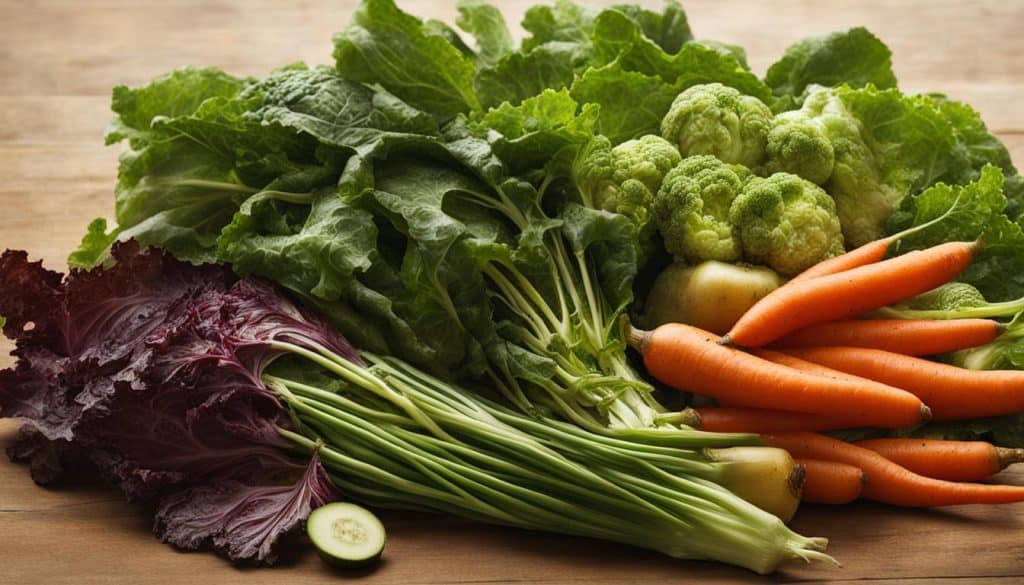
Myth 8: You should store everything in plastic bags or containers.
Contrary to popular belief, not all produce should be stored in plastic bags or containers. While it may seem like a convenient option, some fruits and vegetables require air circulation to stay fresh.
For items like berries that benefit from air circulation, it’s best to store them loosely in the crisper drawer. However, for produce that is prone to wilting or has strong odors, storing them in open containers can lead to spoilage.
Tip: Place a paper towel in the bottom of the container to absorb excess moisture and prevent spoilage.
Consider the needs of your specific produce when deciding how to store them. For instance, leafy greens t ive in high humidity, so store them in a drawer with high humidity control. On the other hand, root vegetables prefer drier conditions, so store them in a drawer with lower humidity.
Myth 9: Crisper drawers are self-cleaning.
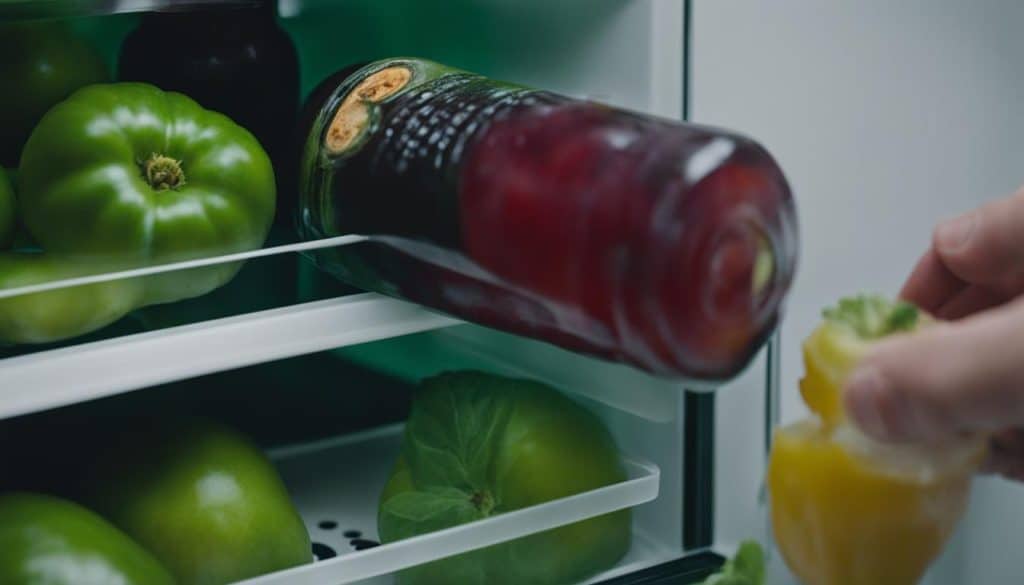
Don’t believe the myth that crisper drawers are self-cleaning. The humid environment inside the drawer provides the perfect breeding ground for mold and bacteria to t ive. To prevent the growth of harmful microorganisms, it’s important to regularly wipe down the drawers with a vinegar solution.
To clean the drawer, remove all the produce and any liners or filters. Mix equal parts vinegar and water in a spray bottle and generously spray the solution onto the interior surfaces of the drawer.
Use a clean cloth or sponge to wipe down the surfaces, making sure to reach all the nooks and crannies. Once finished, air dry the drawer completely before adding your produce back inside.
Myth 10: Crisper drawers are a one-size-fits-all solution.
It’s a common misconception that all crisper drawers are created equal. However, different crisper models offer varying levels of humidity and temperature control, allowing you to adjust settings based on the produce you are storing to achieve optimal results.
To make the most out of your crisper drawer, experiment with the settings and find the ideal setup for your fruits and vegetables.
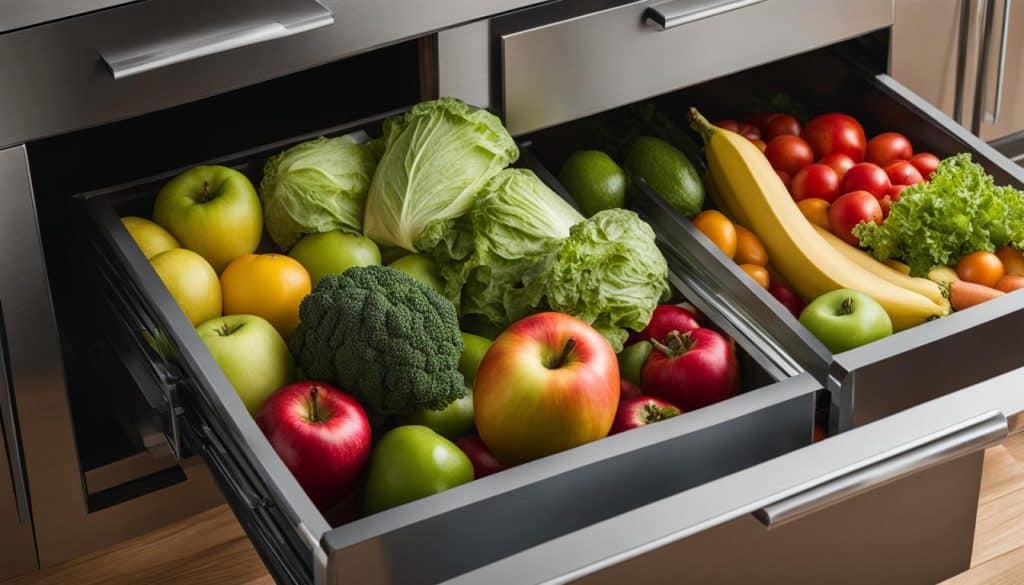
For instance, leafy greens t ive in high humidity, so they should be stored in a drawer with a higher humidity level. On the other hand, root vegetables like carrots and beets prefer drier conditions, so they should be stored in a drawer with lower humidity. By adjusting the settings of your crisper drawer, you can create the ideal environment to keep your produce fresh for as long as possible.
Bonus Tip: Properly organizing your crisper drawers
If you want to avoid spoilage and make your produce last longer, it’s essential to organize your crisper drawers correctly. Here are some tips for organizing your fridge crisper drawers:
- Group fruits and vegetables with similar ripening times together to prevent the release of ethylene gas, which can accelerate spoilage.
- Use a high humidity drawer for produce like leafy greens and a low humidity drawer for items like root vegetables.
- Avoid over-crowding your drawers.
- Ensure that the drawers are always clean and dry to prevent the growth of harmful mold and bacteria.
- Consider using breathable containers to store your produce.
By following these simple tips, you can better organize your crisper drawers and prevent spoilage caused by ethylene gas. You’ll be able to preserve the freshness and nutrients of your fruits and vegetables for longer.
